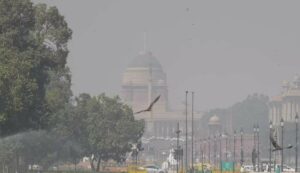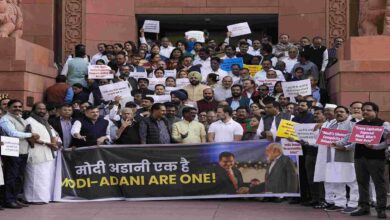Delhi air quality records slight improvement, pollution levels still high
New Delhi: With an Air Quality Index (AQI) of 237 on Saturday, Delhi’s air quality showed a modest improvement over the previous day, but it is still classified as “poor” by the System of Air Quality and Weather Forecasting And Research (SAFAR).
Parts of the national capital were covered in a blanket of fog.

Friday’s recorded AQI was 283
Today’s AQI at ITI Jahangirpuri was 265 while the AQI in the India Gate neighborhood was 237, both of which were classified as “poor.” On Friday, the India Gate AQI was reported at 276, indicating a small improvement.
The Anand Vihar area’s AQI has been worse since Friday; it was 218 yesterday and 367 this morning at 8 a.m.
Residents of the nation’s capital also reported respiratory difficulties as the city fights pollution.
“The pollution has been causing me to always have respiratory problems and headaches. With Chaat Puja and other celebrations approaching, the government must begin cleaning the waterways and acting immediately,” resident Kalyani Twiari said.
Another neighbor, Rakesh Kumar, expressed alarm as well, asking, “How frightening would it grow after Diwali if this is the situation before Diwali? Here, the pollution has been getting worse every day. The government must do something about this.
Gopal Rai, the environment minister for Delhi, had earlier on Friday said that the government will use drones to monitor hotspots around the city and that his administration is working around the clock to reduce pollution.
He also went to one of the city’s thirteen hotspots, the Wazirpur industrial district.
“As we had announced a winter action plan to control winter pollution, several measures are being taken to control pollution, to control vehicle pollution, to control biomass burning,” Rai told reporters. Day and night, the Aam Aadmi Party administration is at work. However, as you are all aware, the pollution levels in our 13 hotspots are greater than Delhi’s typical AQI threshold. As a result, this time we made the decision to use drones to monitor hotspots, and Wazirpur is now one of our 13 hot spots. The panel agency has been operating the drone here today.
Interestingly, despite the Supreme Court’s condemnation of the state government for not doing more to address the problem, there were still a number of stubble burning occurrences in various areas of Punjab and Haryana.
On Friday, there were reports of stubble burning in the Karnal-Jind road region and Kaithal district.





